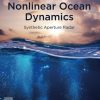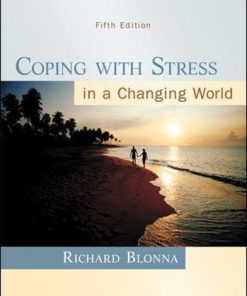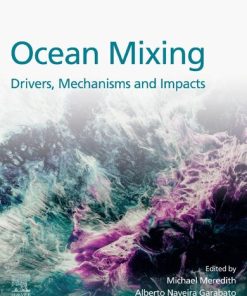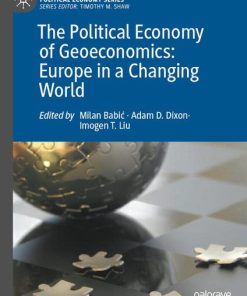Ocean currents physical drivers in a changing world 1st edition by Robert Marsh, Erik van Sebille 0128160608 9780128160602
$50.00 Original price was: $50.00.$25.00Current price is: $25.00.
Ocean currents: physical drivers in a changing world 1st edition by Robert Marsh, Erik van Sebille – Ebook PDF Instant Download/DeliveryISBN: 0128160608, 9780128160602
Full download Ocean currents: physical drivers in a changing world 1st edition after payment.
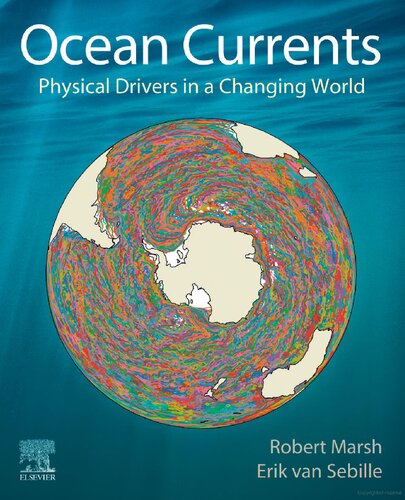
Product details:
ISBN-10 : 0128160608
ISBN-13 : 9780128160602
Author : Robert Marsh, Erik van Sebille
Ocean Currents: Physical Drivers in a Changing World opens with a general introduction to the character, measurement, and simulation of ocean currents, leading to a physical and dynamical framework for understanding the wide variety of flows encountered in the oceans. The book comprises chapters covering distinct aspects of contrasting ocean currents: broad and slow, deep and shallow, narrow and swift, large scale and small scale, low latitudes and high latitudes, and moving in horizontal and vertical planes. Through this approach the authors cover a wide range of applications, from local to global, with considerable geographical context.
Ocean currents: physical drivers in a changing world 1st Table of contents:
Chapter 1: The restless ocean
Abstract
1.1: Ten big questions
1.2: Organization vs. chaos
1.3: Measuring the ocean—Challenges and international organization
1.4: Measuring ocean currents
1.5: Estimating ocean currents
1.6: Computer simulation of ocean currents
1.7: An ocean of scales
1.8: Summary
Chapter 2: Frameworks, data, and methods
Abstract
2.1: Essential physics and scalar conservation
2.2: Essential dynamics—With the flow and at a fixed point
2.3: Scaling arguments and approximating the equations of motion
2.4: Ocean and climate data products
2.5: Numerical models of the ocean and climate
2.6: Particle tracking
2.7: Resourcing Chapters 3–12
2.8: Exercises
Chapter 3: Surface drift, gyres, and the fate of plastic
Abstract
3.1: Large scales in space and time
3.2: The restless atmosphere
3.3: Local response to wind—Surface drift
3.4: Basin-scale response—The great gyres
3.5: Gyre circulation and Ekman currents—The combined surface drift
3.6: Additional influences on surface and near-surface drift
3.7: Examples of surface drift at basin scale
Chapter 4: Western boundary currents and drifting organisms
Abstract
4.1: Mapping and characterizing western boundary currents
4.2: Local force balance
4.3: Basin-scale force balance
4.4: Drift through western boundary current systems—Particle trajectories, ensemble statistics, and ecological consequences
4.5: Transports associated with western boundary currents
Chapter 5: Eastern boundary currents, upwelling, and high biological productivity
Abstract
5.1: Mapping and characterizing EBC systems
5.2: Ekman dynamics in the presence of a coast
5.3: Geostrophy in the presence of topography
5.4: Slope currents
5.5: Drift along and across eastern boundary current systems—3D water parcel trajectories and the ecological consequences
Chapter 6: The tropical oceans, interannual climate variability, and ecosystem adaptation
Abstract
6.1: Mapping and characterizing currents near the Equator
6.2: Ekman dynamics near the Equator
6.3: Tropical variability
6.4: Drift in the tropics—2D water parcel trajectories and some ecological consequences
6.5: Tropical ocean circulation and climate variability
Chapter 7: From the northern subpolar oceans to the Arctic and its retreating sea ice
Abstract
7.1: The northern cryosphere
7.2: The atmosphere at mid and high latitudes
7.3: Water masses of subpolar and high latitudes
7.4: Ocean circulation at subpolar and high latitudes
7.5: Variability and long-term change
Chapter 8: From the Southern Ocean to Antarctica and its changing ice shelves
Abstract
8.1: The southern cryosphere
8.2: The atmosphere at southern high latitudes
8.3: Water masses of the Southern Ocean and around Antarctica
8.4: Surface and deep-reaching currents
8.5: Meridional overturning cells and sensitivity of the 3D circulation to wind forcing
8.6: Modelling the Southern Ocean—A brief history and the status quo
8.7: Applied contexts
Chapter 9: Processes and flows in marginal seas
Abstract
9.1: Processes in marginal seas
9.2: Deep or isolated marginal seas
9.3: Shelf seas
9.4: Freshwater influences
9.5: Biological productivity and pollution in marginal seas
Chapter 10: Ocean boundaries, connectivity, and inter-ocean exchanges
Abstract
10.1: Defining an ocean basin
10.2: Surface connectivity
10.3: Upper-ocean connectivity and inter-ocean exchanges
10.4: Fronts as demarcation lines
10.5: Coherent structures and marine biogeography
10.6: Re-defining an ocean basin
Chapter 11: The global circulation and transformation of water masses
Abstract
11.1: Piecing together a global circulation
11.2: Meridional overturning cells, forcing, and energetics
11.3: Global trajectories and pathways of water parcels
11.4: Re-thinking circulation in property space
11.5: Linking the circulation and transformation of water masses
Chapter 12: Ocean currents, heat transport, and climate
Abstract
12.1: Meridional heat transport by the AMOC and north European warmth
12.2: Variability of the large-scale ocean circulation and regional climate
12.3: Tracing the global overturning in changing property distributions
12.4: Abrupt climate change in the past—A warning for the future
Epilogue: Looking ahead
1: Unfolding changes in ocean currents
2: Emerging technologies
3: Opportunities and solutions
People also search for Ocean currents: physical drivers in a changing world 1st:
what drives ocean currents
ocean currents questions and answers
ocean currents drawing
ocean currents direction
ocean currents part 1
Tags: Ocean currents, physical drivers, changing world, Robert Marsh, Erik van Sebille
You may also like…
Uncategorized
Earth Sciences - Oceanography
Computers & Technology
TouchIT: Understanding Design in a Physical-Digital World 1st Edition Alan Dix
Politics & Philosophy
The European Union in a Changing World Order Antonina Bakardjieva Engelbrekt
Politics & Philosophy - Politics
The Political Economy of Geoeconomics: Europe in a Changing World 1st edition
Uncategorized



